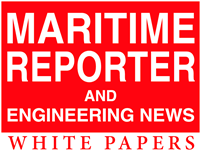
Any time heavy machinery is being moved from one place to another, it’s important to ensure that the equipment being used for the project is both properly maintained and inspected and also that the proper equipment is being used for the task at hand. At these moments, the decision of whether to use owned equipment or to rent a different piece of machinery to ensure that the project runs smoothly is of the utmost importance.
On board commercial shipping and fishing boats, there are many different uses for lifting and rigging equipment, so knowing the proper equipment for the job is only part of the job. Ensuring that the equipment is being used in a safe manner and has been maintained properly can be the difference between life and death. Of the equipment found on board these ships, two of the most common are winches and chain falls.
A winch is designed to perform a horizontal move of heavy objects over flat or light incline and cannot perform vertical lifts without the use of advanced rigging techniques in very specific circumstances. Winches must be mounted to a flat surface and are, therefore, used for pulling loads, not for lifting them. Hoists are designed to lift a load vertically or raise over steep inclines and must be attached to a separate device for stability.
Given the differences between these lifting devices, it’s important to know the different uses for each and how to tell when it’s time to consider replacing the device, wire rope, chain or when to rent the right equipment for the job at hand
Winches are stationary devices that are used in conjunction with a manufacturer specified thickness of wire rope or cable that can handle anywhere from 1,000 pounds to more than 35,000 pounds depending on wire thickness, drum capacity and number of layers of rope on the drum.
Winches operate by winding the wire rope around the drum, utilizing the resulting tension to pull an object. Available power sources for winches include air, electricity and hydraulic, with each one having various benefits and drawbacks depending on the job required. For instance, an electric winch can be found on a tug boat, being used to tow much larger boats behind it.
Typically, a winch would be used on the deck of a boat in moving around containers or other large objects that would be impossible to move in a controlled manner otherwise. The controlled rate of speed offered by winches means that an object can be slid across the surface of a boat on the water with a far greater level of control than using other means of mechanical movement.
A winch’s rating is determined by the maximum amount of weight that can be pulled using only the bottom layer of rope on the drum. Capacity ratings have a converse relationship with the number of layers on the drum, so as the layers of rope increase, the capacity of pull decreases by around 10 percent per layer. With that in mind, choosing the right capacity winch relies on having a good idea of the weight of the load needing to be moved along with the distance the load must be moved. Typically, to determine the winch capacity required for a move, take the weight of the load and multiply by 1½ times. There are, however, other factors to consider beyond the load such as coefficient of friction.
For instance, when using an electric winch, ensuring that the manufacturer supplied duty cycle is followed can save you from having a major issue on the jobsite. If an electric motor is overworked, there are safeguards that are designed to protect the equipment from malfunction, however, there is the chance that the engine sparks, making this type of winch unsuitable for environmentally unstable areas.
With air winches, ensuring the proper level of airflow is the most important aspect of making sure the winch will work as expected. Proper inspection of the hose, air compressor and winch prior to use can be the difference between a successful move or failure. When renting, proper hose should be supplied, ensuring an airtight seal between the air compressor and winch, while also including a dirt stopper and oiler inline on the setup.
Hoists have a variety of uses in the maritime industry, ranging from moving equipment or engines on board the boat, to removing the propeller and drive shaft for maintenance while at a dry dock. Large capacity hoists are even a staple at the dock to raise the boat out of water to begin maintenance and repair on any damaged parts of a vessel. In these projects, a winch would not make for a good option since the materials must be raised up and not simply moved laterally from one place to another, but rather are lifted straight up or rigged to move once in the air.
Hoists are paired up with either chain or wire rope and are operated manually or are powered by electricity or air for larger jobs. Another benefit of using a hoist is that the height of lift is completely customizable and can go anywhere from only 10 feet to upwards of 200 feet of lift. Depending on the style of hoist being used, the lift range can possibly go even higher.
Manually operated chain falls require a significantly lower force to lift than the object being hoisted, allowing a single person to lift an object that would otherwise be immovable without the use of equipment.
Powered hoists allow for objects to be raised and lowered at higher speeds, with far less force than their manually operated counterparts, and are typically used on higher capacity objects. Electric chain falls allow for the operator to plug the unit in to a standard electrical outlet, but can only be used for 15 minutes at a time prior to a cool down period, known as its duty cycle. The benefit of an air chain hoist is that it can be operated continuously and does not need the same down time electric hoists do, which are, therefore, better suited for use in dusty, flammable or dirty environments without the fear of overheating or sparking. Air hoists are the most durable powered option provided a dirt stopper and oiler is paired with the unit to prevent contaminants from entering the hoist.
When choosing between a manual, electric or air powered hoist, there are a variety of factors to consider in choosing which style will be the best for the application desired. For lighter loads being moved that need to be handled more delicately or with more precision, hand chain hoists tend to be the favorite lifting device for their slower raising, lowering speeds and the ability to control far more of the lift than moving at a higher rate of speed. In dirty, dusty environments or areas that contain flammable gasses, an air hoist would be the preferred method over electric due to lack of mandatory duty cycle and the fact that the system is largely closed off to external contaminants. Electric hoists tend to see use in areas that require a more compact setup without the air hoses and higher rates of lifting speed, but must adhere to strict usage guidelines.
Typically, most problems with hoists stem from improper usage. For hand chain hoists, exceeding the capacity of the hoist can cause damage, especially if pushed beyond the typical safety factor of 20 percent beyond the listed rating. With electric hoists, if ambient temperatures exceed allowable ranges or duty cycle is not followed, the hoist may malfunction. The most common issues for air hoists tend to stem from hoses that are undersized or dirt entering the unit if not paired with dirt stoppers and oilers from the rental company. Both issues are easily avoidable, but dirt entering a closed system requires a replacement unit and service to be performed to repair any damage.
It is important to keep all of the aforementioned factors in mind when choosing the hoist for each job. Ensuring proper equipment is utilized on the jobsite keeps the work moving and avoids any unnecessary downtime or jobsite accidents.
On board commercial vessels, chain falls are among the most frequently used pieces of equipment. During the daily operation of the ship, breakdowns occur and require urgent repair, oftentimes requiring the use of lifting equipment to aid in the removal and installation of replacement parts. For these types of projects, hand chain hoists tend to be the equipment of choice due to the level of control and the small footprint the gear takes up while not in use. Hand chain hoists also find use in repositioning equipment or in conjunction with larger capacity hoists to shorten sling length to control center of gravity.
When it comes time for maintenance, dry docks will use larger air hoists to remove hubs, propellers and drive shafts, allowing for these parts to be retooled or replaced, cleaned up and then reinstalled. Some of the most common capacity hoists used on these projects include and hoists and typically, these units are air controlled hoists.
Removing the hub from the propeller or drive shaft requires at least a hoist, occasionally with an assist from lower capacity chain falls. On controllable pitch propeller systems, with each blade weighing a shade under the blades are removed individually using smaller hoists, freeing the hub for removal by the larger hoist. Removing the shaft to access the bearings and retool the shaft requires the use of significantly larger hoists paired up with smaller units performing one of several different rigging methods to pull the shaft out and then hoist it up and over.
The ultimate question faced by many in the industry is when is it a better option to purchase and when is the better time to rent. For maintenance and repair on board the vessel during daily operation, owning the equipment and performing regular maintenance and service tends to be the preferred choice.
For the larger projects on dry docks or for larger projects aboard the ship that may only be performed once or twice per year, the question of which method would be more practical comes down to each individual, but several factors should be weighed in the decision.
Given the extreme load weights faced in this industry, having confidence in the equipment used on a job is an absolute must and, therefore, further emphasizes the need for frequent inspections and repair on the hoists used on a job. In the ship repair industry, with these hoists seeing regular use, the need for frequent maintenance and repair is greater than faced in other industries. A poorly maintained hoist can fail, causing irreparable damage to a propeller, hub or shaft or may even be cause for injuries on the jobsite or worse.
Ensuring that the proper maintenance and repair can be performed on each hoist on a regular basis is one major factor in making the determination of whether to rent or buy. Does your facility have the equipment needed to inspect, repair, test and recertify equipment prior to each use? Can your current staff accommodate the repairs in house or does the equipment need to be sent elsewhere for repair? Proper space must also be available for storage of the equipment away from the elements and in such a way to avoid damage to the equipment.
These are only a couple of the important, yet often overlooked, aspects of owning equipment. Consider the responsibility of owning equipment as well as all aspects of renting equipment when making the determination of which method works best for your circumstances.
With so much riding on these pieces of equipment, properly maintained hoists and winches reduce the potential for damaged loads, injuries or death on a jobsite. Given the gravity of what can go wrong, processes must be set in place to create and adhere to strict maintenance schedules for each piece of owned equipment in your fleet. Designating a person, or a group depending on how many pieces of equipment are owned, whose sole purpose is maintaining your equipment for safety and reliability or finding a reliable third-party company is the first step.
The following tips are a only a starting guideline for the maintenance that may be required and should be increased as necessitated by the type and quantity of jobs performed. Some common issues that would require the equipment be considered for removal are also outlined below. It is important to be certain that manufacturer specified guidelines are followed to ensure the safety of your equipment.
w• Inspect each part of a winch or hoist before and after each use. If there is any evidence of wear on the wire rope or chain such as fraying, kinked wire, elongated or worn links of chain, immediate replacement is necessary before the unit can be placed back into service.
• When possible, store winches and hoists in a clean, dry area, cleaning the unit after use to remove dirt and debris. Cable or chain used on the jobsite should be removed from the equipment, inspected, cleaned and stored for later use.
• Load testing should be performed on each hoist in your fleet before each use, ensuring that the load rating and serviceability of each hoist is accurate and the unit is safe for use on the next project.
• Follow manufacturer specified lubrication guidelines so the brake and ratcheting mechanisms inside the hoists are ready for service when needed.
• Discovery of worn, cracked, twists of more than 10 degrees from the plane or stretching of the throat opening greater than 15 percent is evident on any chain hooks, the chain must be removed from service and replaced according to OSHA guidelines in section 1910.184.
• Stretched or elongated chain links, damaged or missing safety hook latches, immediate replacement is required per ASME guidelines section B30.9.
• Brake wear that results in slippage of the load during use or testing mandates removal of the unit from the fleet to be replaced with a new hoist.
Lifting Gear Hire, the top name in hoisting and rigging rental equipment, rents everything below the hook of the crane from spreaders and shackles to slings and chain falls. Bringing an unmatched reputation for safety, reliability and quality, LGH shares a common purpose of serving our customers with passion, motivation and an unwavering dedication to providing the safest rental equipment available on the market. With over 20 rental centers stretching from coast-to-coast in North America, LGH and representatives local to most job sites can provide an unsurpassed inventory of rental equipment to suit every project. LGH — puts safety first.

In the marine market, tight deadlines and budget constraints are common obstacles to overcome. Even finding a qualified welder for a marine application is a challenge, so being able to join pipe without flame can make all the difference in the marine world. Reducing time spent on repairs and labor expenses means you can focus on doing your job and keeping your crew safe. However, when dealing with a work environment that involves floating on a volatile sea, it can be difficult to ensure safety and precision while operating ocean-based support vessels, drill ships and oil platforms.

Understanding the many details of a satellite communications solution – and how a comprehensive approach is the fastest path to digitalization

While there have been a few attempts over the years to design more efficient towboats, as a whole the inland industry has lagged behind the rest of the marine world in regards to the application of modern engineering methods to produce more efficient hull shapes. Conventional wisdom has always held that the shape of the towboat hull had very little impact on the overall efficiency of a line haul or unit tow when it comes to fuel efficiency or vessel speeds. However, TSGI has been applying state of the art Computational Fluid Dynamics (CFD) to analyze this very topic, with significant results to the contrary.